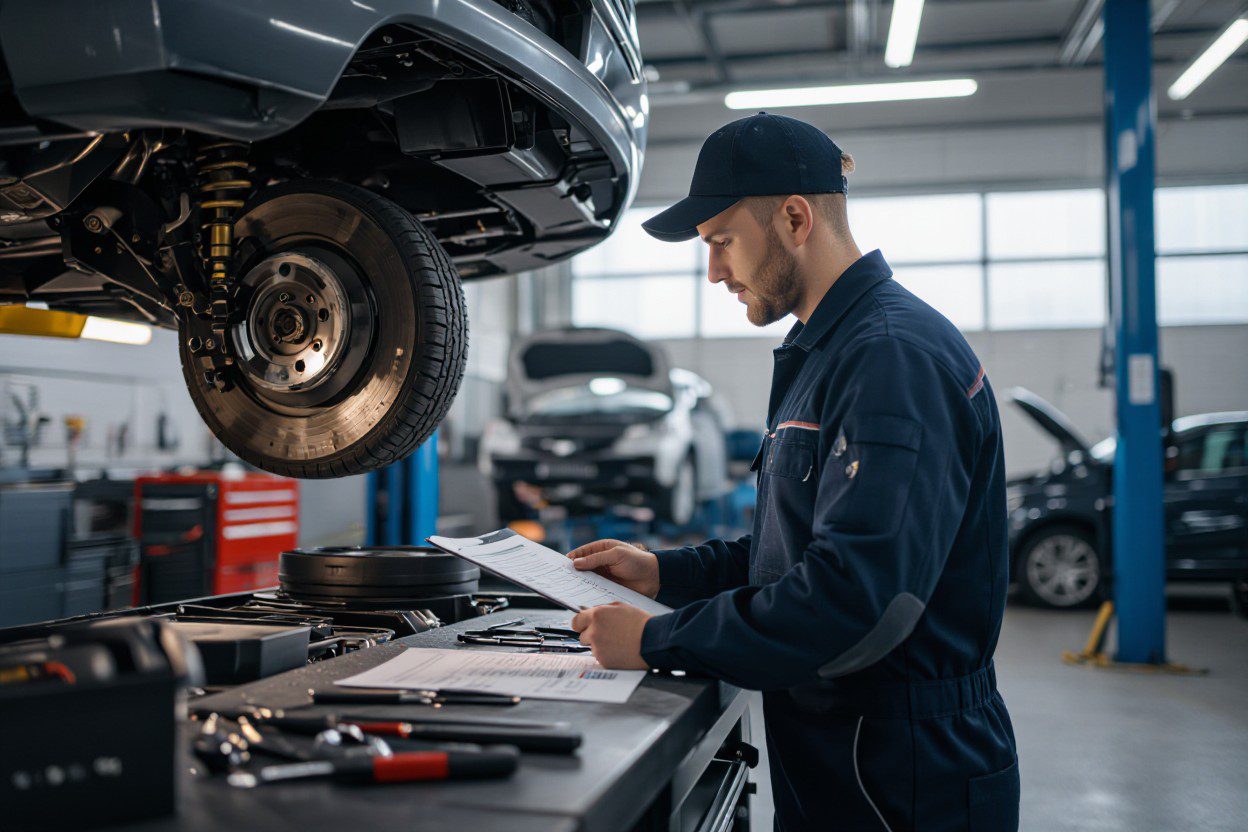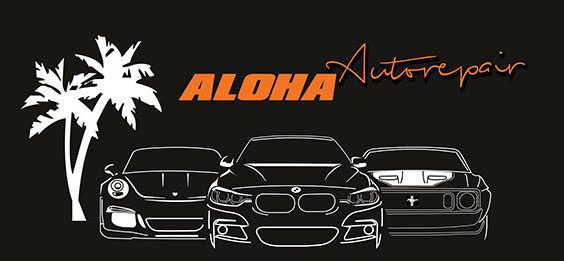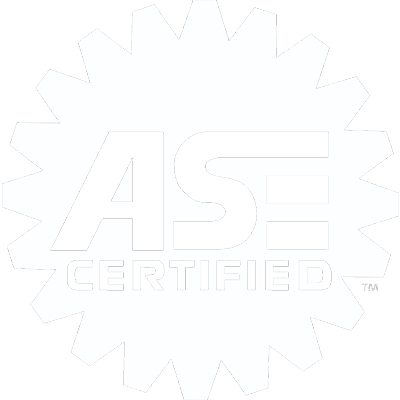Just schedule your appointment with Aloha Auto Repair for a comprehensive vehicle safety inspection, where you receive a full safety system diagnostic and a detailed safety component check that evaluates brakes, steering, lights, tires, and airbags, provides clear findings, and outlines recommended repairs so you know exactly how to keep your vehicle safe.
Key Takeaways:
- Ensures road-ready condition through a full safety system diagnostic covering brakes, steering, suspension, lights, and airbags
- Uses a detailed safety component check for tires, seatbelts, fluid levels, battery, and warning systems
- Recommended at routine service intervals and before long trips to detect wear and safety risks early
- Certified technicians provide a clear report with prioritized repairs and a maintenance plan to keep vehicles safe and compliant

Key Components of a Safety Inspection
At Aloha Auto Repair your comprehensive vehicle safety inspection combines a full safety system diagnostic with a detailed safety component check across brakes, tires, steering, suspension, lighting, and electronics; you’ll get a 30-point scan plus OBD-II and ABS code reads, visual inspections, and functional tests so vulnerable parts are identified early and repaired before failure.
Braking Systems: Beyond Just Pads and Rotors
You should have pad thickness measured (replace at about 3 mm remaining), rotors checked for runout and minimum thickness per manufacturer specs, hoses inspected for cracks, and calipers tested for proper piston movement; technicians will also test ABS wheel-speed sensors, parking brake adjustment, and recommend brake fluid replacement typically every 2 years or 24,000–36,000 miles because fluid absorbs moisture and loses boiling point.
Tires: The Unsung Heroes of Vehicle Safety
Measure tread depth—2/32″ is the legal minimum but 4/32″ improves wet traction—and check sidewalls for cuts, bulges, or cracking; verify tire pressure to the vehicle placard (underinflation accelerates wear and hurts handling) and rotate every 5,000–7,500 miles while balancing and aligning if you see uneven wear or steering pull to extend life and maintain safety.
Read the DOT code to know tire age (the last four digits show week and year, e.g., 2518 = week 25 of 2018); you should consider replacement if tires are older than six years with visible aging, and definitely by ten years regardless of tread. You’ll also want matching tread depth and type on each axle—mixing worn and new tires harms stability—while TPMS sensors and proper valve condition are checked during your detailed safety component check.
The Role of Technology in Modern Inspections — Aloha Auto Repair
Diagnostic Tools That Shape the Future of Safety
Advanced scanners access the OBD-II port (standard since 1996) to pull live sensor data, freeze-frames and fault codes during your safety vehicle inspection, enabling a full safety system diagnostic. Thermal imaging reveals hot brakes or bearing drag, borescopes expose corrosion inside assemblies, and EV battery analyzers measure cell voltages and internal resistance. You get a detailed safety component check that pairs software data with hands-on tests, so faults are found and documented before they cause roadside failures.
How AI is Transforming Vehicle Maintenance
Machine learning models analyze telematics, fault history and sensor trends to predict failures so you can schedule repairs proactively; industry pilots report 10–20% reductions in unscheduled downtime. Image-recognition tools flag cracked hoses or worn brake pads from shop photos, while anomaly-detection algorithms monitor vibration and temperature drift to trigger targeted inspections. These AI-driven insights feed your full safety system diagnostic and make your detailed safety component check more accurate and repeatable.
Deployment examples include OTA diagnostics that push firmware fixes to vehicles and fleet platforms that aggregate millions of miles of data to model part life; you’ll see alerts prioritizing high-risk items by probability-of-failure and estimated remaining useful life. Predictive models use regression and classification algorithms plus sensor fusion to reduce false positives, and documented results let you prove compliance and ROI for every comprehensive vehicle safety inspection you authorize.
Common Oversights in Vehicle Safety Checks — What Aloha Auto Repair Finds
You skip a slow fluid drip or a rattling suspension link at your own risk; during a comprehensive vehicle safety inspection at Aloha Auto Repair our technicians use a full safety system diagnostic to reveal hidden faults, and a detailed safety component check routinely flags worn brake pads below 3 mm, tires under 2/32″ tread, corroded battery terminals, and loose steering fasteners before they become roadside emergencies.
The Hidden Risks of Ignoring Small Issues
You might treat a slight vibration or dimming headlight as nuisance-level, yet a 2/32″ tire tread or a battery voltage under 12.4V can quickly turn into loss of control or a no-start; Aloha Auto Repair has repaired wheel bearings and replaced alternators that began as small noises, illustrating how microscopic wear on brakes or a hairline hose crack can cascade into trip-ending failures.
Why Regular Inspections Matter More Than You Think
You save money and lower risk by scheduling routine checks every 6 months or 6,000 miles; a scheduled comprehensive vehicle safety inspection at Aloha Auto Repair combines a full safety system diagnostic with a detailed safety component check to catch issues early, reduce average repair costs, and ensure components like ABS sensors and airbags remain fully serviceable.
You can avoid larger expenses—replacing brake pads typically runs $100–$300, while letting worn pads damage rotors can push costs to $300–$800; Aloha Auto Repair’s 60-point inspections often identify worn belts, cracked hoses, and corroded connectors that, if addressed during routine maintenance, prevent cascading failures, warranty disputes, and insurance complications while keeping your vehicle roadworthy.
Financial Implications of Skipping Inspections — Aloha Auto Repair Perspective
Skipping a comprehensive vehicle safety inspection often turns small fixes into big bills: a $75–$150 inspection that includes a full safety system diagnostic and a detailed safety component check can catch worn brake pads ($150–$300) before they damage rotors ($300–$700) or calipers ($400+). You face higher repair costs, greater downtime, and lost resale value when minor issues compound into major failures.
Cost-Benefit Analysis: Inspections vs. Repairs
An annual comprehensive vehicle safety inspection typically costs $50–$200 depending on depth; avoiding it risks repairs that commonly run $800–$2,500 for engine or transmission problems. You save money when early detection prevents cascading failures—catching a coolant leak during an inspection can prevent a $1,200 head-gasket repair, turning a modest inspection fee into significant net savings.
Insurance Impacts: How Safety Checks Can Save You Money
Documented safety checks affect insurance economics: many insurers offer discounts or favorable underwriting for vehicles with regular maintenance records, and an at-fault claim can drive premiums up 20–40%. You lower claim frequency and create proof of preventative care by keeping records from each full safety system diagnostic and detailed safety component check.
Providing stamped inspection reports from Aloha Auto Repair when you renew coverage or dispute a rate increase strengthens your position; insurers review maintenance history during underwriting and claims. You typically pay under $200 annually for inspections versus the long-term cost of a single at-fault claim or major mechanical failure, making documented inspections a practical way to limit premium spikes and out-of-pocket losses.
Key Takeaways for Vehicle Owners: Be Proactive — Aloha Auto Repair’s comprehensive vehicle safety inspection tips
Creating a Personal Inspection Checklist
List immediate checks you can do monthly: tire pressure at recommended PSI, tread depth above 4/32″, brake pad thickness above 3 mm, fluid levels (engine oil, coolant, brake fluid) and battery voltage above 12.4 V. Use findings from any full safety system diagnostic to prioritize repairs and add items such as steering play, suspension noises, and light operation. A detailed safety component check after 12,000 miles or post-collision helps you tailor intervals and avoid costly failures.
When to Seek Professional Help: Know the Signs
Warning signs that need shop attention include persistent dashboard warnings (ABS, airbag, check engine), vibration at 30–60 mph, brake pulsation or reduced bite, visible fluid leaks, smoke or burning smells, and uneven tire wear beyond 3 mm difference. You should bring the vehicle in for a full safety system diagnostic when multiple symptoms occur simultaneously, after impact, or if a detailed safety component check flags wear beyond manufacturer specs.
Schedule a professional inspection immediately if safety systems report faults or if you experience sudden performance loss; Aloha Auto Repair recommends a full safety system diagnostic at the first ABS/airbag light, after a hard stop, or every 12 months/12,000 miles. Technicians will run code scans, measure brake rotor runout in thousandths of an inch, test battery cranking amps, and perform a detailed safety component check to produce a prioritized repair list and cost estimate.
To wrap up — Aloha Auto Repair
As a reminder, when you bring your vehicle to Aloha Auto Repair for a comprehensive vehicle safety inspection, you get a full safety system diagnostic and a detailed safety component check that identifies wear, faults, and maintenance priorities so you can drive with confidence and address issues before they escalate.
FAQ
Q: What is a comprehensive vehicle safety inspection?
A: A comprehensive vehicle safety inspection is a top-to-bottom evaluation that verifies a vehicle’s roadworthiness and identifies repair needs.
Q: What specific items are checked during the inspection?
A: The inspection includes brake pad/thickness measurement, rotor condition, tire tread and pressure, wheel alignment indicators, headlamps/taillights/turn signals, horn, windshield and wipers, battery load test, charging/starting system evaluation, steering play and suspension wear, belt and hose condition, fluid leaks and levels, and emissions/engine warning diagnostics.
Q: How long does a comprehensive vehicle safety inspection take and what will I receive?
A: Typical inspections take 45–90 minutes depending on vehicle complexity. You’ll receive a written report listing passed items, items that need attention now, and recommended maintenance with estimated costs.
Q: How often should I get a comprehensive vehicle safety inspection?
A: Schedule one annually for routine maintenance, before long road trips, when buying a used vehicle, after collision repairs, or if dashboard warnings or unusual noises occur.
Q: What does a comprehensive vehicle safety inspection typically cost and is it worth it?
A: Prices vary by location and vehicle type, commonly ranging from a complimentary visual check to $75–$150 for a full documented inspection with diagnostics.
Keep your car road-ready with Aloha Auto Repair’s comprehensive vehicle safety inspection. Our expert team checks every critical system to ensure your vehicle is safe, reliable, and protected. Schedule your vehicle inspection today for peace of mind on every drive!
Also read:
Aloha Auto Repair — Quick Guide to Auto Oil Filters
Why Should You Book Car Diagnostics Service? The Ultimate Guide to Avoiding Costly Repairs
Vehicle Mechanic Near Me: Finding Reliable Service for Your Car






